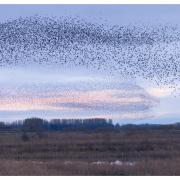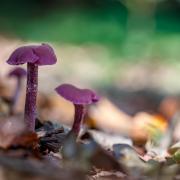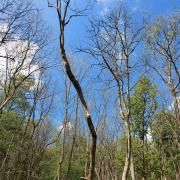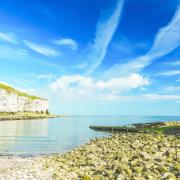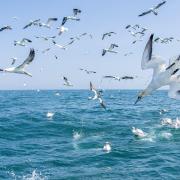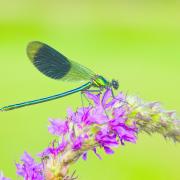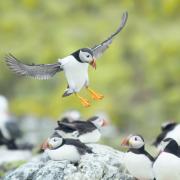TV audiences have been captivated by Channel 5’s new wildlife series delving into the lives of some of the county’s feathered and furry residents. Our nature writer Tom Marshall from the Yorkshire Wildlife Trust shares some top tips to get close to the action yourself.

Red squirrel
Beatrix Potter couldn’t resist the charms of ‘Squirrel Nutkin’ as a friend for Peter Rabbit, but today any back garden high jinx would be restricted to just a handful of red squirrel strongholds.
The Snaizeholme Red Squirrel Trail near Hawes is a delightful walk and includes a purpose-built feeding and viewing area for these diminutive mammals. Local photographer Simon Phillpott also has a Yorkshire Dales hide when keen photographers can also try for that once-in-a-lifetime shot.

Seabird cities
Yorkshire’s high rise residences for 250,000 seabirds are renowned in Europe – and getting close to the action doesn’t get any easier than the headland coast north of Bridlington. Gannets – our largest seabird - and puffins are the undoubted stars of the show.
Great all-access family viewing and live camera facilities are available at RSPB Bempton Cliffs & Seabird Centre, whilst YWT Flamborough Cliffs offers views from the stunning coast path.

Adder
Adders were an unexpected star of the show in the first episode, and early spring is a great time to seek out these secretive reptiles whilst chilly mornings still prevail. Take your chance before the sun’s rays bring too much warmth, and always allow adders to bask with a sensible distance, and dogs on a lead.
Yorkshire Wildlife Trust’s Allerthorpe Common near York offers good opportunities, along with nearby Skipworth. The sandy paths of Dalby Forest in the North York Moors can be a promising location too.

Peregrine falcon
The undisputed fastest animal on the planet has made a remarkable comeback from half a century ago when it came perilously close to being lost from our countryside. Today, along with their traditional haunts of clifftop and quarry side lookouts, you’ll find them in many of our major cities.
Malham Cove’s peregrines must have the best view in Yorkshire, whilst the seabird (and pigeon) filled clifftops of the east coast (see above) are also a popular spot. Scarborough’s Castle, York’s Minster, Leeds and Sheffield are also among some of the locations where these birds of prey have now taken to city-living, with many having online webcams.

Great crested grebes
There’s still time to catch one of nature’s most romantic moments in spring, when great crested grebes indulge in their exquisite pair bonding dance. A gradual mimicking of head and body movements is capped off with the exchanging of gifts (well, pondweed usually) and a final flourish of walking of water.
Yorkshire’s vast array of wetlands all offer a chance to experience this ‘Strictly’ show on water, including RSPB Old Moor and YWT Potteric Carr in South Yorkshire, YWT North Cave Wetlands near Hull and Hornsea Mere on the East Coast.
Read Tom’s wildlife feature every month in Yorkshire Life and listen out for him on BBC Leeds’ ‘Call of Nature’ on Sunday mornings.












